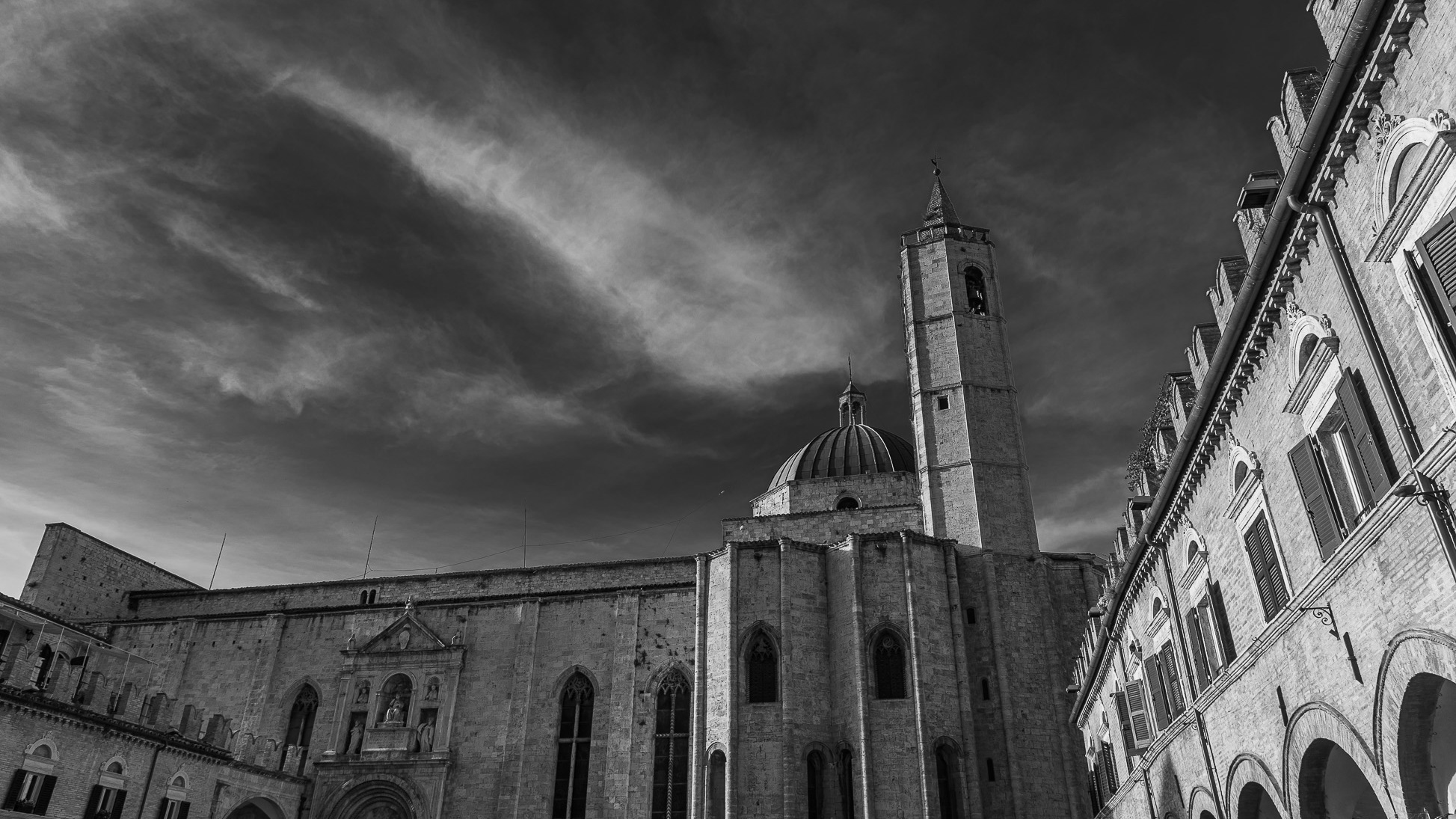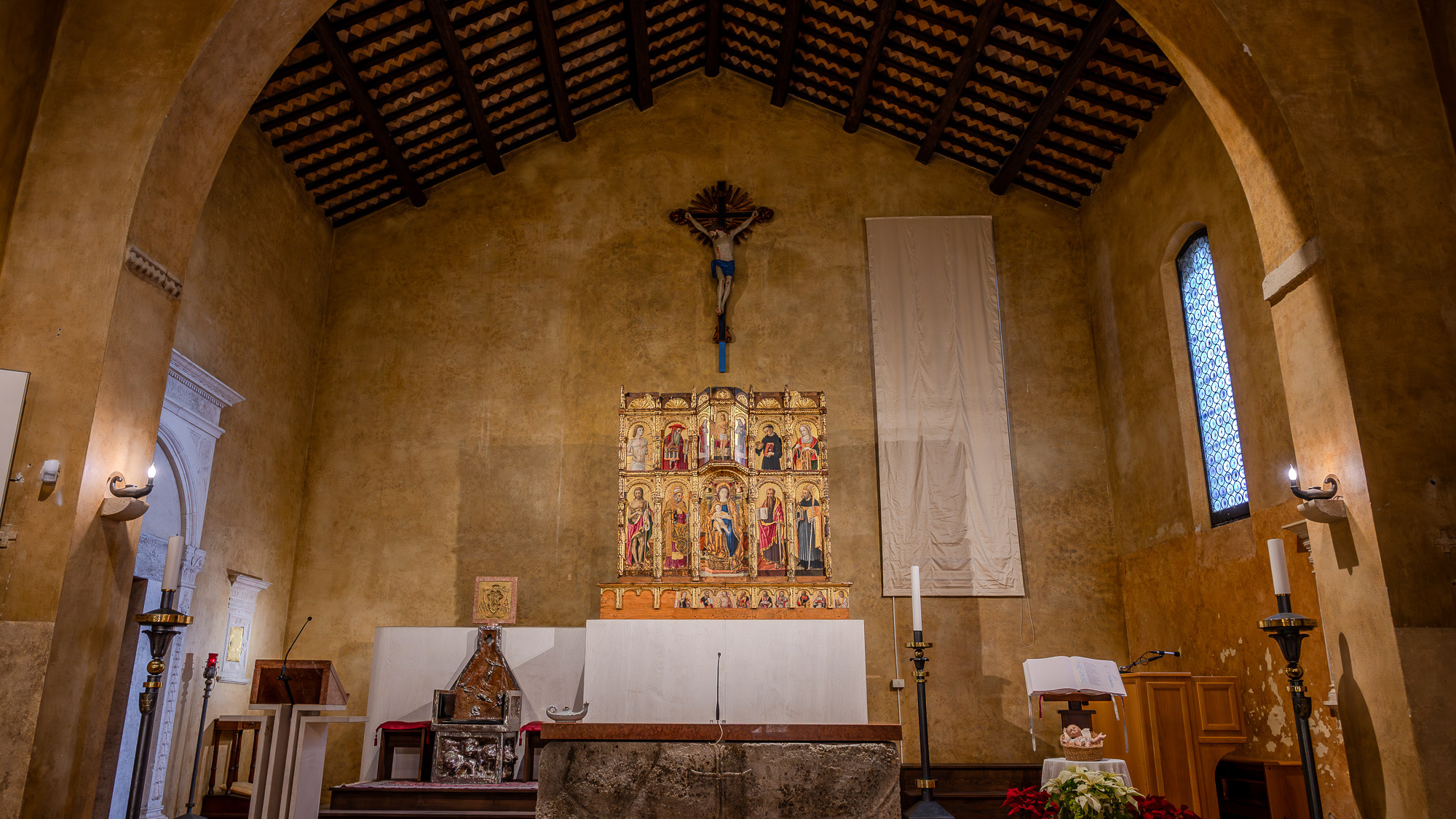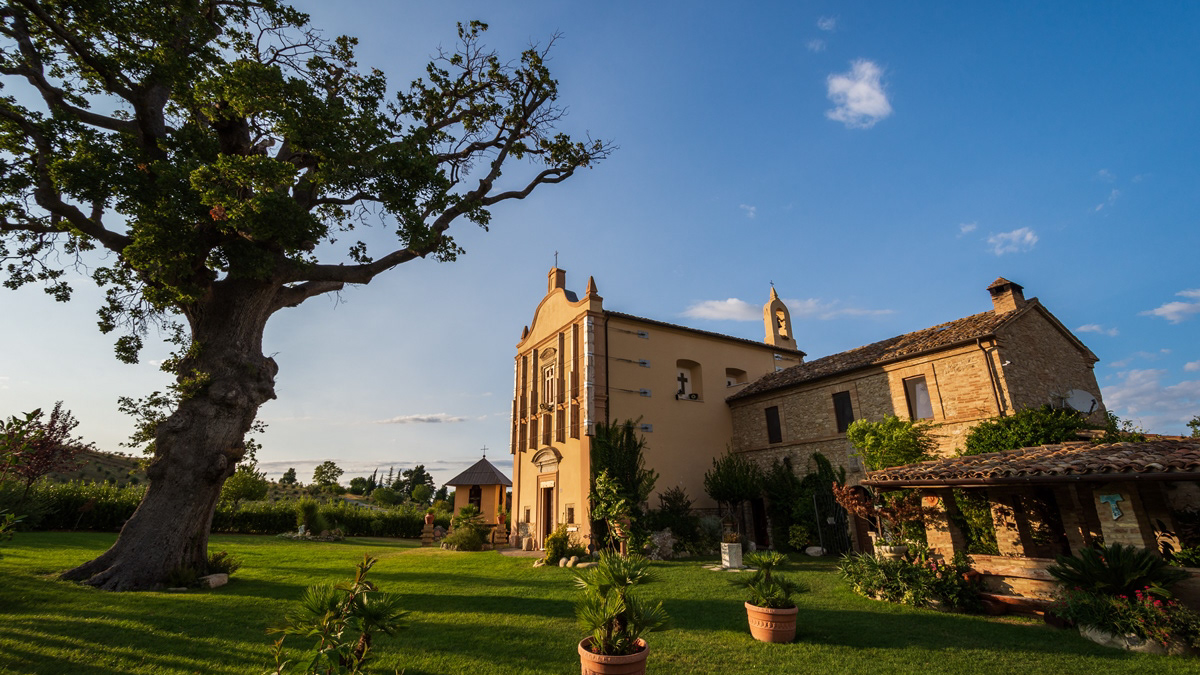Ancona. Night view from the port
2023
You may also like
2022
Montemisio. Sanctuary of the M. della Consolazione.
In a small clearing, at the foot of Mount Ascension, there is the Sanctuary of the Madonna della Consolazione or of Montemisio. The Church was built by the monks of Farfa, built on the ruins of a pagan temple dedicated to the goddess Artemis or Artemisia.
In a small clearing, at the foot of Mount Ascension, there is the Sanctuary of the Madonna della Consolazione or of Montemisio.he church was built by the monks of Farfa, built on the ruins of a pagan temple dedicated to the goddess Artemis or Artemisia. The cult passed first for the veneration of the Virgin of the Belt, then for the Madonna della Tempera (the water needed for the fields). A legend tells that, while the drought threatened the crops, a propitiatory procession was held. The statue of the Madonna had just set off, when the sky darkened and the beneficial rain fell. In the 18th century, after the restoration, the church became a place of worship for the Madonna della Consolazione. Today the sanctuary is the destination of numerous pilgrimages. The traditional festival takes place on August 15th. The chapel has a single nave, a terracotta floor and a travertine altar. In the garden stands a centuries-old oak more than 23 meters high, with a circumference greater than 5 meters.
2022
Ripatransone, Ascoli Piceno. The Church of S. Rocco
The Church of S. Rocco was built in the first half of the 16th century, with a sandstone portal by M. Giacomo da Varese. Inside, the wooden statue of St. Rocco, by the Ripano sculptor Don Francesco Evangelisti (18th century), and the altar statue of the Sacred Heart of Jesus (around 1875), by Giorgio Paci from Ascoli.
2025
Marche, spectacular view and sunset

2022
Ascoli Piceno. The Church of San Francesco
This church is considered one of the best Italian works of Franciscan architecture, as well as the most representative Franciscan religious building in the Marche region. It was begun with the adjoining convent in 1258, consecrated in 1371 and completed with the dome in the 16th century. On the main facade, in Via del Trivio, there are three Gothic portals, while the right side acts as a scenic backdrop to the Piazza del Popolo and is characterized by the dynamic fifteenth-century apses, the fourteenth-century side portal surmounted by the monument to Julius II of 1510 and ends with an apsidal group of rare architectural model.

2025
Grottammare. The church of S. Agostino
The church, most likely donated by the community, was built by the Augustinian fathers between the end of the 15th century and 1517.

2024
Torre di Palme. Church of Sant'Agostino
Church of Sant'Agostino. the Polyptych by Vittore Crivelli. The building is entirely made of brick and has two entrances. The interior has a single room, covered by wooden trusses.
2022
Montefortino. The sanctuary of the Madonna dell'Ambro
The sanctuary of the Madonna dell'Ambro is a religious building of Marian worship, located in the municipality of Montefortino, in the Sibillini Mountains.

2018
Rotella - Sanctuary of the Madonna della Consolazione
In a small clearing, at the foot of Mount Ascension, there is the Sanctuary of the Madonna della Consolazione or of Montemisio. The Church was built by the monks of Farfa, built on the ruins of a pagan temple dedicated to the goddess Artemis or Artemisia. The cult passed first for the veneration of the Virgin of the Belt, then for the Madonna della Tempera (of the water needed for the fields). A legend tells that, while the drought threatened the crops, a propitiatory procession was held. The statue of the Madonna had just set off, when the sky darkened and the beneficial rain fell. In the 18th century, after the restoration, the church became a place of worship for the Madonna della Consolazione. Today the sanctuary is the destination of numerous pilgrimages. The traditional festival takes place on August 15th. The chapel has a single nave, a terracotta floor and a travertine altar. In the garden stands a centuries-old oak tree over 23 meters high, with a circumference greater than 5 meters.
2022
Recanati. The church of S. Agostino
The church of Sant'Agostino is a religious building in Recanati. The structure is known for its bell tower which inspired Giacomo Leopardi's poem Il spero solitario.

2025
Adriatic Sea. Cupra Marittima.
